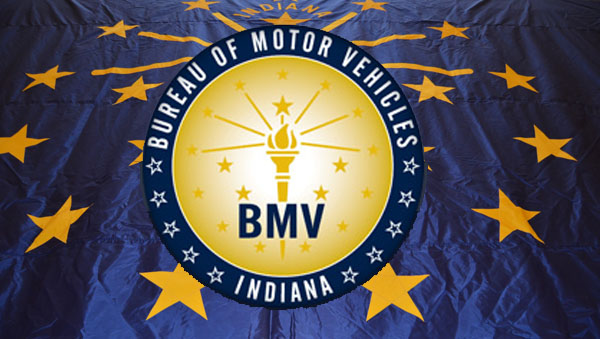More then 1 million people failed the test in a 3 year period

(Story Courtesy of Indiana Capital Chronicle)
Indiana has the highest failure rates for its driver’s license test in the U.S., with more than 1,362,100 Hoosiers failing the test from 2020 to 2023, according to a recent USA Today report. The inability to pass the test can harm residents in Indiana, one of the most car-dependent states in the country.
“Everybody gets the idea, ‘well, I’ll just go in there and take the test,’” said Mike Clouse, president of the Indiana Driver Education Association. “Everyone who does that, most of them do not pass it.”
There are two tests Indiana residents must pass to receive their driver’s license: a written knowledge test and an in-car driver’s skills test.
Residents must pass the written knowledge test to apply and renew their learner’s permit. USA Today reported that 43% of test takers from 2020 to 2023 passed this knowledge test.
Hoosiers also need to take an in-car driving test, which assesses a driver’s ability to safely operate a vehicle, use defensive driving habits and park. 80.4% of test takers passed the skills test.
The Indiana Capital Chronicle contacted the Indiana Bureau of Motor Vehicles on June 4 requesting data and comment but agency officials did not respond by publication.
Barriers to the test
Rep. Becky Cash, R-Zionsville, has heard her constituents and co-workers talk about struggling to pass the written test, even if they have driver’s licenses in other states. She said some Hoosiers take the test up to six times before they’re able to pass the test.
“I’ll talk to people my own age and they’ll say, ‘oh my gosh, I moved here from Massachusetts, and I nearly failed the Indiana test when I moved here’ or ‘I failed it the first time and I’ve been driving for 25 years,’” Cash said.
People who recently moved to Indiana from another country or are trying to renew an expired license or have six or more points on their driver record also have to take the written test. If someone moves to Indiana from a different state and needs to renew their license, they must also take this test. The test consists of multiple choice questions on traffic maneuvers and types of traffic signs, and test takers must get 80% or higher correct answers to pass the exam.
Cash also said some people may face additional barriers to taking the written test. For instance, she said her daughter, who has a learning disability, struggled to take the test on the BMV’s computer. She failed the test twice on the computer before being offered a paper copy, which she passed the first time.
“Why can’t anybody ask for a paper copy from the first time they take the test?” Cash said. “Why do they have to fail it on a computer twice if they know that they have a learning disability that makes it so they need to be able to physically have the paper?”
In Indiana, students must be at least 16 years and 270 days old to obtain a driver’s license. The Indiana BMV allows students who are 16 years and 90 days of age to take the test with a licensed driver training provider, if they have successfully completed a driving training program with that provider. Cash believes this law can disadvantage students whose families cannot afford to pay for a driving training program, which can often cost more than $400 per student.
Cash also believes a shortage of certified driving instructors means some students face long delays to getting their license, which can put extra pressure and stress on families. She said one of her constituents faced this challenge.
“She was almost in tears,” Cash said. “She asked [the training program] ‘well, where do we go for the driver’s part of it? I need my kids to be able to get their license,’ and they said ‘we don’t know there’s a shortage.’”
Cash thinks the BMV should re-evaluate its test to see if there are questions that are not “pertinent anymore,” such as questions about outdated road signs. She also said the legislature should look into the law that allows students to get their license six months earlier if they pay for a driver’s training course.
“Either we want people to be able to drive, know how to drive and be able to pass the test or we’re just making people jump through hoops,” Cash said.
Indiana is one of the most car dependent states in the country with 91.2% of residents relying on a car to commute to work, according to a 2024 U.S. Insurance Agents report. Todd Jennings, a program manager for the Indiana Department of Transportation, said Hoosiers who rely on a car or live in areas that do not have a developed public transportation system, often spend 16 cents of every dollar on transportation — most of which going toward buying, maintaining and operating cars.
“Also, less developed public transportation harms those who rely on it, especially older Americans, individuals with disabilities, and work commuters,” Jennings said. “All three of these demographics make up rural public transportations most frequent passengers.”
Jennings manages the state’s Section 5311 Program, which provides grants to rural areas seeking to provide transit service. In 2023, 71 Indiana counties had a 5311-funded rural public transit agency. However, Jennings said limited operating hours can still pose additional barriers to those without a car.
“Those short hours make it difficult for passengers to make it to second and third shift jobs, or for students, night classes,” Jennings said.
Clouse, a longtime driving instructor, also knows of people taking the written test several times to pass. However, he believes “a blind monkey could pass that test.”
“If you want my opinion, I think they should make it a little stricter,” Clouse said. “I’ve been doing this for 30 years, and it’s just like anything else in the education system—they’ve watered it down a little bit.”
Clouse also believes making the test easier could have safety implications. A 2022 crash report found collision rates were highest among Indiana drivers ages 15- to 20-years old compared to other age groups, and attributes the high rates to a “lack of experience” and “increased novelty-seeking and risk-taking behaviors among young drivers.”
“Just because you passed a test doesn’t mean you can drive a vehicle,” Clouse said.

 Galvin Scholarship Application Now Available
Galvin Scholarship Application Now Available
 Kentucky Attorney General Cracks Down on Robocalls Targeting Kentuckians
Kentucky Attorney General Cracks Down on Robocalls Targeting Kentuckians








